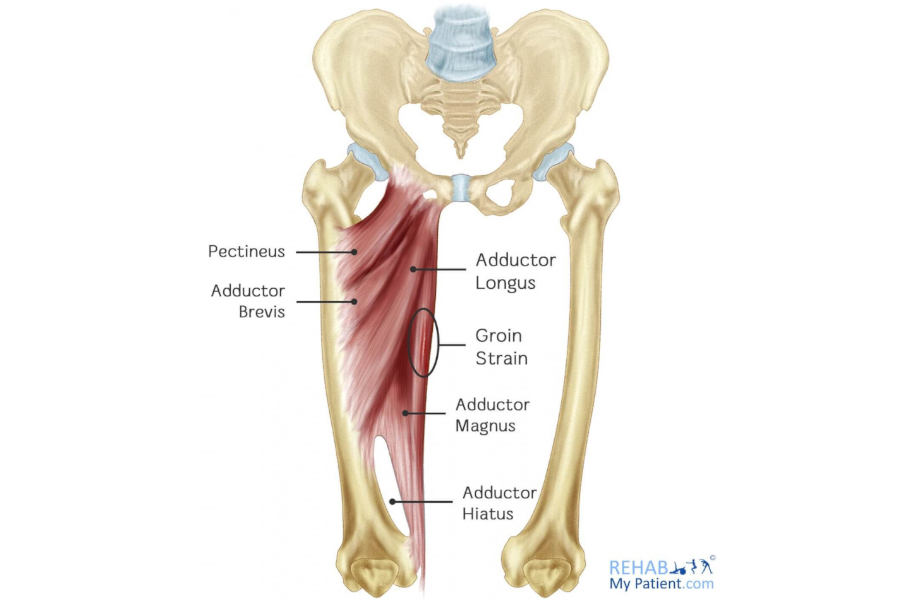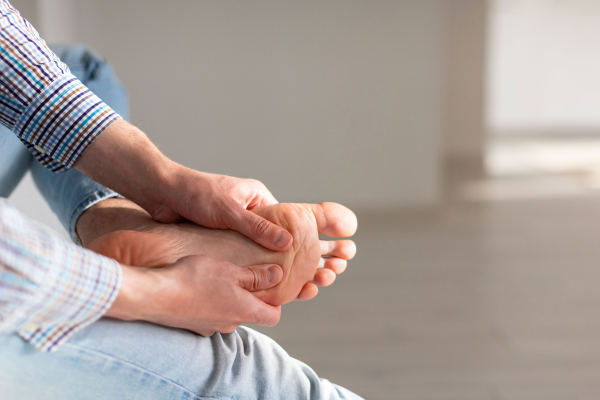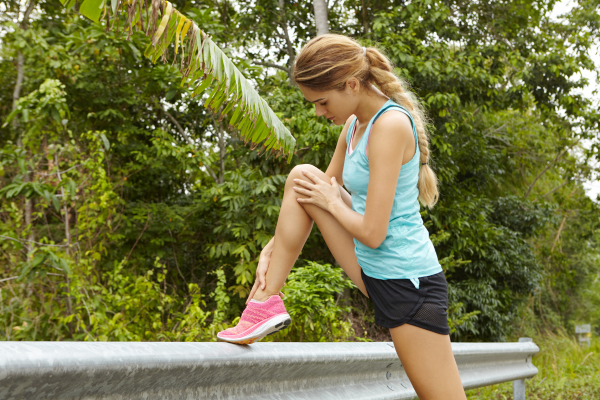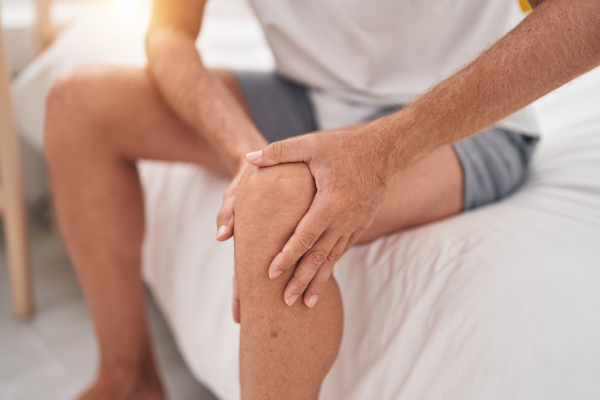The adductor muscles are a group of three thin muscles that run along the inside of the thigh. Collectively they are called the “groin muscles” and they function to pull your leg inwards. This type of movement is often seen in horse riders, and kicking a ball to the side. They also help to balance your body on uneven surfaces, and can stabilise your trunk when moving sideways. If you have limited mobility or pain as a result of discomfort in the groin area, physiotherapy services may be a good starting point on the path to recovery.
A groin strain is commonly known as an adductor strain amongst medical professionals. It is a common injury that involves tearing in the adductor muscle(s) found on the inside of the thigh. Groin strains occur more often in individuals who participate in competitive sports such as football, baseball, karate, tennis and running (typically sprinting).
Related Content: Learn how to prevent sports injuries
A groin strain is the result of a sudden contraction of the adductor muscles when it is in the elongated/stretched position. If the force going through the muscle is too large, a tear can occur to the muscle fibres, resulting in the muscle strain. Pain can vary between a dull aching to a sharp, intense pain. Usually, the pain will be more acute when walking or moving the leg. You may also feel uncomfortable spasming in the inner thigh muscles.

Symptoms of a groin strain
The symptoms of a grain strain will range from mild to severe depending on the injury. If you have any of the symptoms below you will more than likely have pulled your hamstring
- Sudden sharp pain on the upper inside of your leg, or groin area
- Groin discomfort described as ‘pulling’ sensation
- Tender to touch in your groin
- Walking may be affected (depends on the severity of strain)
- Pain on running
- Swelling/bruising (occasional)
- Weakness in your leg
How to Manage your groin strain
1. Stop all exercise
Do not continue any form of exercise and seek the advice of your osteopath or physiotherapist. Initially, resting the leg and keeping it elevated on a stool, for example, is often advised so as to avoid the injury getting worse. After about 48 hours, gentle movement is encouraged. Painkillers or anti-inflammatories may be of help, for example paracetamol or ibuprofen.
2. Apply RICE
RICE stands for Rest, Ice, Compression and Elevation, which will relieve pain and reduce swelling. Ice should be applied to the area for 10-15 minutes every couple of hours. If an ice pack is not available, a bag of frozen peas is a great alternative, but ensure it is wrapped in a damp towel to avoid burning the skin.
3. Treat quickly
If possible, groin strains should be treated within the first 24 to 48 hours after the injury occurred. This assists in the reduction of bleeding and inflammation and will also help relieve pain in the area. A treatment programme from your osteopath or physiotherapist may help speed up the healing process and recovery time. This usually includes exercises that will restore proper movement and mobility to the leg. Soft tissue massage, ultrasound therapy and taping techniques can be useful to speed up healing and reduce pain.
4. See a Physiotherapist
Physiotherapy at a later stage is of crucial importance, especially for professional athletes, as rehabilitation exercises will help you achieve full strength to your adductor muscles.
Recovery time varies significantly on the position of the tear, and the severity of the tear. Manual treatment can improve recovery, as will a home exercise programme. If the tear is high on the adductor tendon, recovery can be significantly slower and take approximately 12-16 weeks. A tear to the mid-belly of the muscle will typically take between 4 and 12 weeks to heal depending on the severity of the tear.
In rare circumstances, you may require crutches to assist your walking.
Simple groin strain exercises to try
It’s important to avoid moving your leg too much in the first 48 hours after the injury. After this time, a few basic exercises can help you return to a normal level of activity.
Floor stretch
1. Lie on the floor face up (Legs should be outstretched and straight)
2. Slowly move the right leg out to the side of the body
4. Return the leg to a central position
5. Repeat with the left leg
Knee Bend
1. Lie on the floor face up (Legs should be outstretched and straight)
2. Keeping the foot on the floor, bend the right leg
3. Repeat with the left leg
Chair lift
1. Sit on a chair
2. Keeping the knee bent, lift the right foot to just below hip level (hold for a few seconds)
3. Return foot to the floor
4. Repeat with the left leg
Knee squeeze
1. Sit on a chair
2. Place a soft ball or rolled towel between the knees
3. Gently squeeze the ball or towel for a few seconds
4. repeat a few times
Side lift
1. Lie on the right side of the body
2. Support the body by leaning on the right elbow
3. Place left hand in front of the body for balance
4. Keeping the left leg straight, gently lift upwards
If any of the exercises cause more pain, stop doing them immediately and seek medical advice.
If your groin is causing you a lot of discomfort then you might need to see a physiotherapist. We have multiple locations across the the South of England, so if you need to see us find your nearest clinic below.





